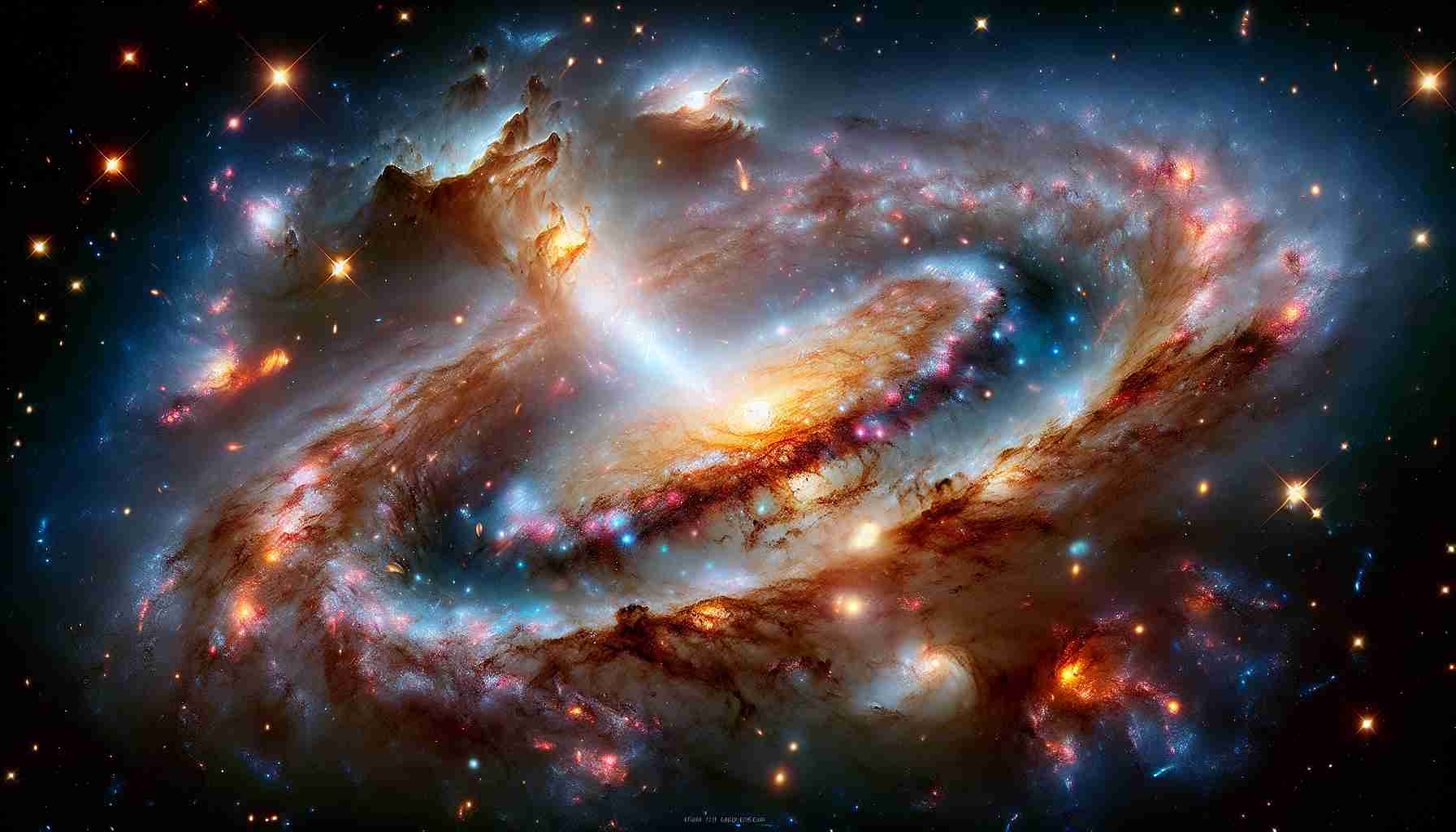Astronomers have made a groundbreaking observation involving the galaxy NGC 7318b, which collided with its neighboring galaxies at an extraordinary speed of 2 million miles per hour. This incident, part of the group known as Stephan’s Quintet, triggered a shock wave that reverberated through the surrounding cosmic milieu, altering the intergalactic environment dramatically.
Located approximately 290 million light-years from Earth, Stephan’s Quintet comprises five galaxies in a stunning gravitational interplay. Initially documented in 1877, this enigmatic group has become a focal point for researchers studying celestial collisions and their implications for galaxy evolution. The recent impact generated by NGC 7318b has not only disturbed existing gas and plasma structures but also illuminated them in the radio spectrum, marking an increase in stellar activity.
The collision produced a substantial shock wave, propelling energy through the quintet and creating conditions conducive to star formation. Observations utilizing advanced technologies, such as the WEAVE spectrograph, have enabled scientists to examine the behavior of ionized gas, unraveling the complexities of energy distribution.
This cosmic event allows astronomers to gather invaluable insights into the processes that drive galaxy growth and formation. By scrutinizing such dynamic interactions, researchers are piecing together the broader narrative of the universe’s evolution, highlighting the importance of collisions like NGC 7318b’s in shaping the cosmos as we know it.
### FAQ Section
What is NGC 7318b?
NGC 7318b is a galaxy that recently collided with its neighboring galaxies at an incredible speed of 2 million miles per hour as part of the group known as Stephan’s Quintet.
What is Stephan’s Quintet?
Stephan’s Quintet is a group of five galaxies located approximately 290 million light-years from Earth. It has been studied since its discovery in 1877 and is notable for its gravitational interactions and collisions among the galaxies.
What are the effects of the collision involving NGC 7318b?
The collision triggered a significant shock wave that altered the intergalactic environment, disturbed existing gas and plasma structures, and increased stellar activity. Additionally, it created conditions favorable for star formation.
How do astronomers observe these cosmic phenomena?
Astronomers use advanced technologies, such as the WEAVE spectrograph, to analyze the behavior of ionized gas and to study the distribution of energy caused by such cosmic events.
Why are collisions like that of NGC 7318b important in astronomy?
These collisions provide critical insights into the processes of galaxy growth and formation, helping researchers understand the broader narrative of the universe’s evolution.
### Key Terms and Definitions
– **Galaxy**: A massive system that consists of stars, stellar remnants, interstellar gas, dust, and dark matter, bound together by gravity.
– **Intergalactic**: Relating to or occurring in the regions between galaxies.
– **Shock Wave**: A type of propagating disturbance that moves through a medium (in this case, space) resulting from a dynamic event such as a collision.
– **Stellar Activity**: Refers to various phenomena occurring in stars, including star formation and changes in brightness or energy output.
– **Ionized Gas**: A gas in which a significant number of atoms or molecules are ionized, meaning they have lost one or more electrons, which often leads to the emission of light.
### Suggested Related Links
– NASA
– Hubble Space Telescope
– American Astronomical Society
